Creating the perfect living environment for a Cane Corso is crucial for their well-being and happiness. In this comprehensive guide to Cane Corso living environments, we'll explore the ideal home setup, space requirements, and environmental considerations for this majestic breed. Whether you're a prospective Cane Corso owner or looking to optimize your current living situation, you're in the right place to gain expert insights that will ensure your powerful companion thrives in their home environment.
- Understanding Cane Corso Space Requirements
- Creating a Cane Corso-Friendly Home Interior
- Outdoor Environment for Cane Corsos
- Cane Corsos in Different Living Situations
- Exercise and Mental Stimulation in the Home Environment
- Cane Corso-Proofing Your Home
- Special Considerations for Multi-Pet Households
Understanding Cane Corso Space Requirements
Before diving into specific home setups, it's essential to understand the space needs of a Cane Corso. These powerful dogs require ample room to move, rest, and play comfortably.
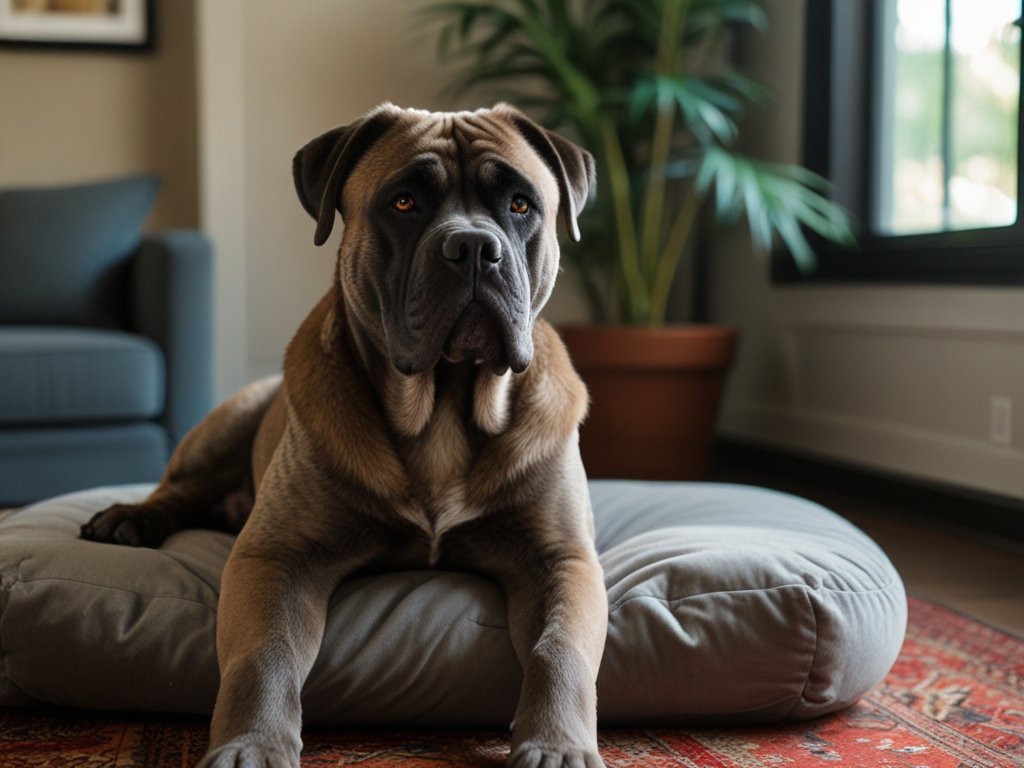
Indoor Space Needs for Cane Corsos
Cane Corsos are large dogs that need sufficient indoor space:
- Minimum living area: At least 500 square feet of open indoor space
- Sleeping area: A designated spot for a large dog bed (at least 48" x 30")
- Play area: Room for interactive play and toys
Pro Tip: While Cane Corsos can adapt to various living situations, they thrive in homes with plenty of open space to stretch out and move around freely.
Outdoor Area Considerations
Access to outdoor space is crucial for a Cane Corso's well-being:
- Yard size: Ideally, a minimum of 1/4 acre fenced yard
- Fencing height: At least 6 feet tall to prevent escapes
- Secure gates: Double-check latches and locks for safety
Remember, even with a large yard, regular walks and outdoor excursions are still necessary for proper exercise and mental stimulation.
Adapting Small Spaces for Cane Corso Living
Living in a smaller space? Here's how to make it work:
- Maximize vertical space: Use tall cat trees or dog-safe shelving for climbing and perching
- Create defined areas: Designate specific spots for eating, sleeping, and play
- Frequent outings: Compensate for limited space with more frequent walks and trips to dog parks
Key Point: With proper management and exercise, Cane Corsos can adapt to smaller living spaces, but it requires extra effort and dedication from the owner.
Creating a Cane Corso-Friendly Home Interior
Once you understand the space requirements, it's time to focus on making your home interior suitable for a Cane Corso.
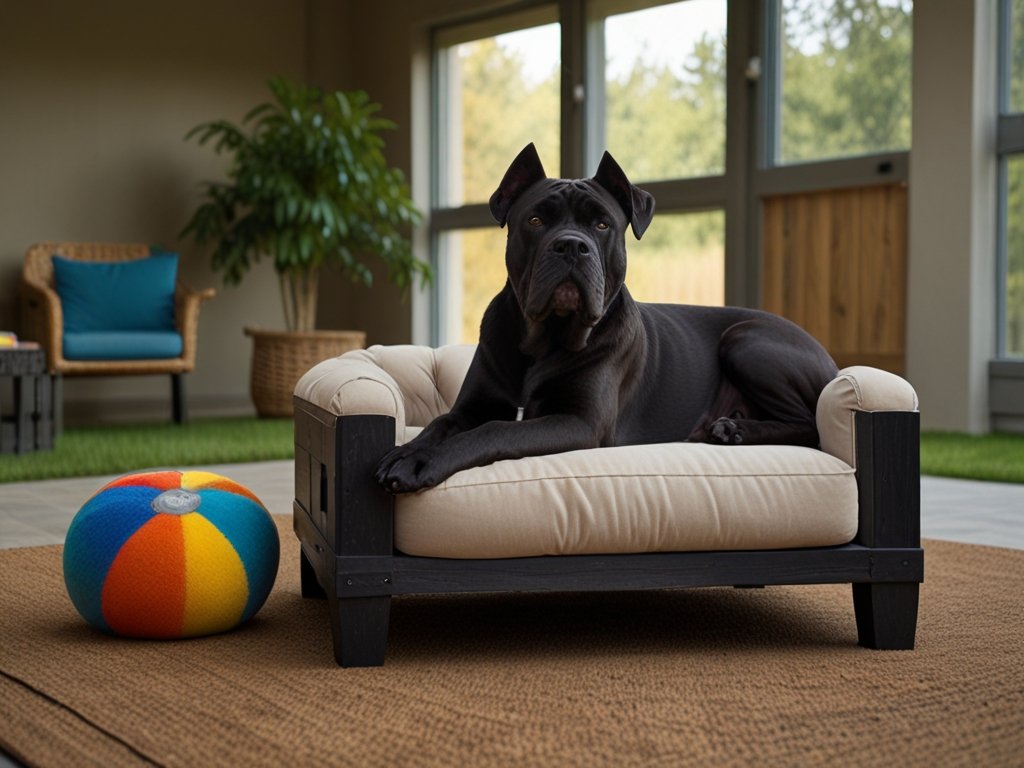
Choosing Appropriate Flooring
The right flooring can make a big difference for your Cane Corso:
- Hardwood or tile: Easy to clean and keeps your Corso cool
- Low-pile carpets: Provide traction but avoid thick carpets that can trap heat
- Non-slip mats: Place in key areas to prevent slipping
Avoid: Slippery surfaces that can lead to joint strain or injury.
Furniture and Layout Considerations
Adapt your furniture and layout to accommodate your Cane Corso:
- Sturdy furniture: Choose durable pieces that can withstand a large dog's weight
- Open pathways: Ensure clear paths for your Corso to move around easily
- Elevated surfaces: Provide a raised bed or couch for your dog to survey their domain
Tip: Consider your Cane Corso's size when arranging furniture to prevent accidental knockovers.
Temperature Control and Comfort
Cane Corsos are sensitive to extreme temperatures:
- Ideal temperature range: 68-78°F (20-26°C)
- Cooling options: Provide fans or air conditioning in warm weather
- Warm bedding: Offer insulated bedding for colder months
Always ensure your Cane Corso has access to fresh water and a cool resting spot to prevent overheating.
Outdoor Environment for Cane Corsos
A well-designed outdoor space is crucial for your Cane Corso's happiness and well-being.
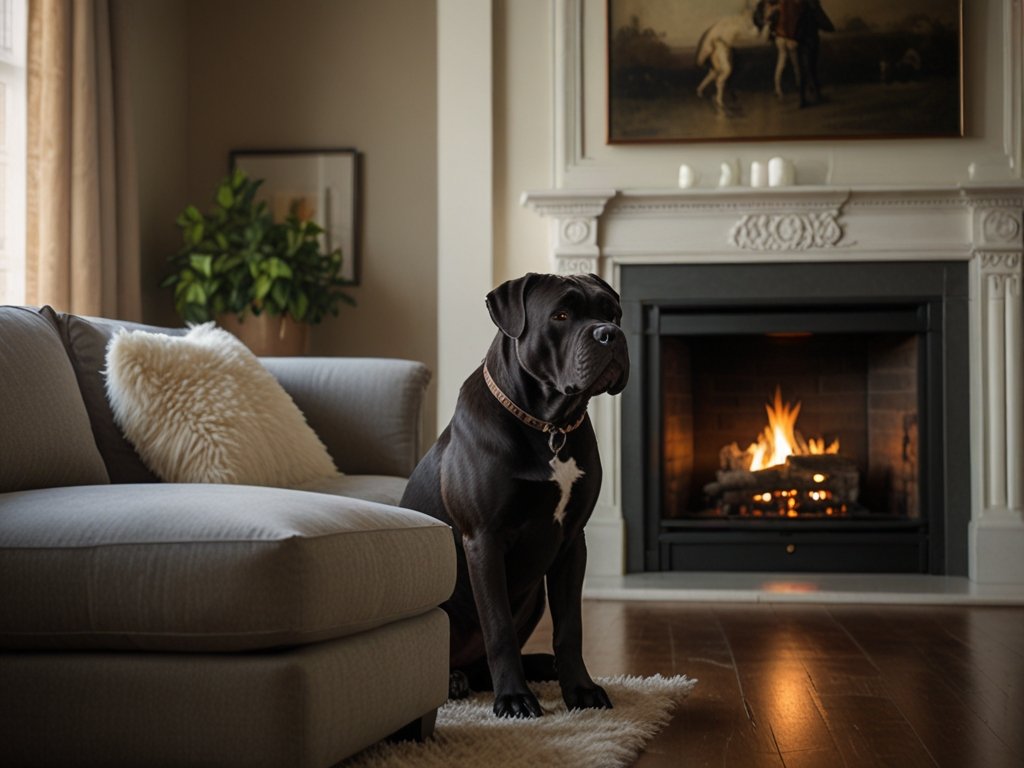
Yard Setup and Fencing Requirements
Create a safe and engaging outdoor area:
- Secure fencing: Minimum 6-foot high, sturdy fence with no gaps
- Shaded areas: Provide shelter from sun and rain
- Digging zones: Designate a specific area where digging is allowed
Safety First: Regularly inspect your fence for any weak spots or potential escape routes.
Creating Engaging Outdoor Spaces
Make your yard a playground for your Cane Corso:
- Obstacle course: Set up jumps, tunnels, or weave poles
- Water features: A kiddie pool or sprinkler for hot days
- Scent games: Hide treats or toys in the yard for mental stimulation
Rotate outdoor toys and activities to keep your Cane Corso engaged and prevent boredom.
Safety Considerations for Outdoor Areas
Ensure your outdoor space is safe for your Cane Corso:
- Remove toxic plants: Research and remove any plants harmful to dogs
- Secure garbage areas: Use locking lids on trash cans
- Check for hazards: Regularly inspect for sharp objects or potential dangers
Remember: Always supervise your Cane Corso when outdoors, especially in unfenced areas.
Cane Corsos in Different Living Situations
Cane Corsos can adapt to various living environments with proper care and attention.

Apartment Living with a Cane Corso
While challenging, apartment living is possible with a Cane Corso:
- Frequent exercise: Plan for multiple daily walks and play sessions
- Noise consideration: Train your Corso to minimize barking
- Vertical space: Utilize wall-mounted shelves or tall dog furniture
Key to Success: Commitment to providing ample exercise and mental stimulation is crucial in apartment settings.
Suburban Home Considerations
Suburban homes often provide an ideal environment for Cane Corsos:
- Fenced yard: Ensure a secure outdoor space for play and relaxation
- Neighborhood walks: Familiarize your Corso with the local area
- Indoor-outdoor balance: Create a flowing environment between inside and outside
Take advantage of local parks and pet-friendly areas for additional exercise and socialization.
Rural and Farm Environments for Cane Corsos
Rural settings can be perfect for Cane Corsos, but require some considerations:
- Roaming instincts: Be aware of your Corso's desire to patrol large areas
- Livestock interactions: Properly introduce and train around farm animals
- Environmental hazards: Be mindful of wildlife, pesticides, and farm equipment
Pro Tip: Cane Corsos in rural environments may require additional training to manage their protective instincts appropriately.
Exercise and Mental Stimulation in the Home Environment
Keeping your Cane Corso physically and mentally stimulated is crucial for their well-being and behavior.

Indoor Exercise Solutions
Even in limited space, you can provide exercise:
- Tug-of-war: Use sturdy ropes for interactive play
- Stair exercises: Supervised stair climbing for fitness
- Indoor fetch: Use soft toys for gentle indoor fetch games
Safety Note: Always supervise indoor play to prevent accidents or damage to your home.
Creating Mental Stimulation Zones
Mental exercise is as important as physical activity:
- Puzzle feeders: Use food-dispensing toys to make mealtimes engaging
- Training corners: Designate an area for daily training sessions
- Rotating toy collection: Swap out toys regularly to maintain interest
Incorporate daily training sessions to keep your Cane Corso's mind sharp and reinforce obedience.
Balancing Indoor and Outdoor Activities
Create a routine that balances indoor and outdoor time:
| Time of Day | Activity Type | Duration |
|---|---|---|
| Morning | Outdoor walk | 30 mins |
| Midday | Indoor play | 15 mins |
| Afternoon | Training | 20 mins |
| Evening | Outdoor play | 45 mins |
Adjust this schedule based on your Cane Corso's age, health, and energy levels.
Cane Corso-Proofing Your Home
Ensuring your home is safe for your Cane Corso is essential for their well-being and your peace of mind.
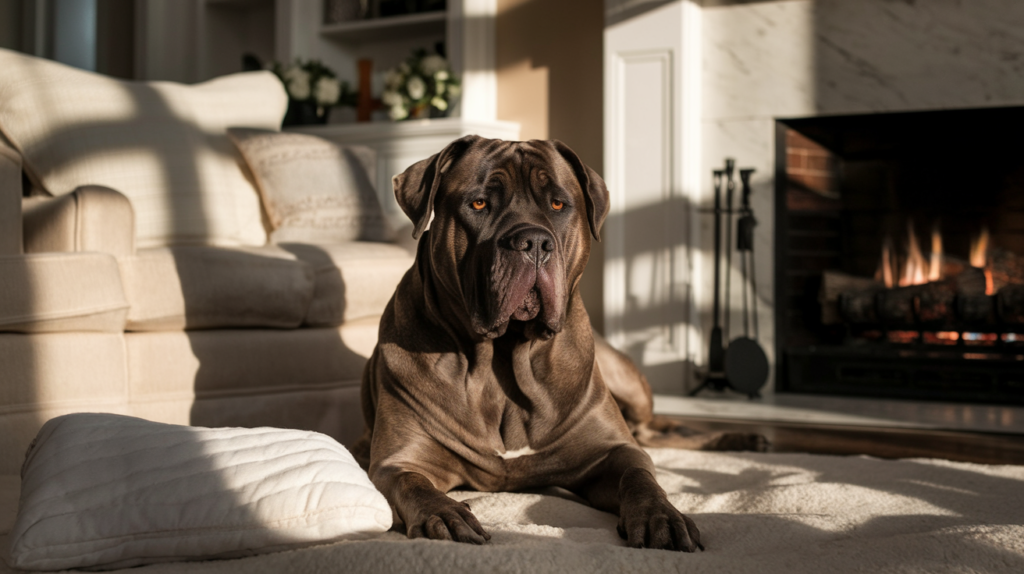
Addressing Potential Hazards
Identify and eliminate common household dangers:
- Toxic plants: Remove or place out of reach
- Electrical cords: Use cord covers or tape down loose wires
- Small objects: Keep items that could be swallowed out of reach
Remember: Cane Corsos are large and powerful. Ensure breakable items are securely stored.
Secure Storage for Food and Belongings
Prevent unwanted snacking and destruction:
- Use high shelves: Store food and valuables out of reach
- Invest in sturdy containers: Use chew-proof containers for dog food
- Childproof latches: Install on cabinets containing hazardous items
Teach your Cane Corso the "leave it" command to help manage their curiosity about household items.
Creating Safe Zones During Absences
Establish a secure area for when you're away:
- Crate training: Provide a large, comfortable crate as a safe space
- Dog-proofed room: Designate a specific room with necessary amenities
- Interactive toys: Leave puzzle toys to keep your Corso occupied
Pro Tip: Gradually acclimate your Cane Corso to alone time to prevent separation anxiety.
Special Considerations for Multi-Pet Households
Introducing a Cane Corso to a home with other pets requires careful planning and management.
Introducing Cane Corsos to Other Pets
Follow these steps for successful introductions:
- Neutral territory: First meetings should be on neutral ground
- Slow and controlled: Allow pets to acclimate gradually
- Positive associations: Reward calm, friendly behavior
Patience is Key: Some pets may take weeks or even months to fully adjust to each other.
Designating Spaces for Each Pet
Create harmony by giving each pet their own space:
- Separate feeding areas: Prevent resource guarding
- Individual resting spots: Provide beds or crates for each pet
- Escape routes: Ensure smaller pets have areas to retreat if needed
Respect each pet's need for personal space and quiet time.
Managing Resources in a Multi-Pet Home
Prevent conflicts over resources:
- Multiple water stations: Place water bowls in different areas
- Toy rotation: Regularly swap out toys to maintain interest
- Supervised playtime: Monitor interactions during high-energy play
Important: Always feed pets separately to prevent food aggression issues.

Creating the ideal living environment for your Cane Corso is essential for their health, happiness, and overall well-being. By considering their space requirements, adapting your home to their needs, and providing ample opportunities for exercise and mental stimulation, you can ensure your Cane Corso thrives in their living space.
Remember, every dog is unique, so be prepared to adjust your setup based on your individual Cane Corso's personality and needs. With the right environment, your Cane Corso will be a content and well-adjusted companion for years to come.
Are you ready to transform your home into the perfect Cane Corso haven? Start implementing these tips today and watch your gentle giant flourish in their ideal living environment. Your efforts will not only improve your dog's quality of life but also strengthen the bond between you and your loyal Cane Corso.
Do you have any questions about setting up the perfect living space for your Cane Corso? Are you currently facing any challenges in creating an ideal environment for your dog? Share your thoughts or experiences in the comments below! Let's build a community of knowledgeable Cane Corso owners and help each other create the best possible homes for our beloved companions.

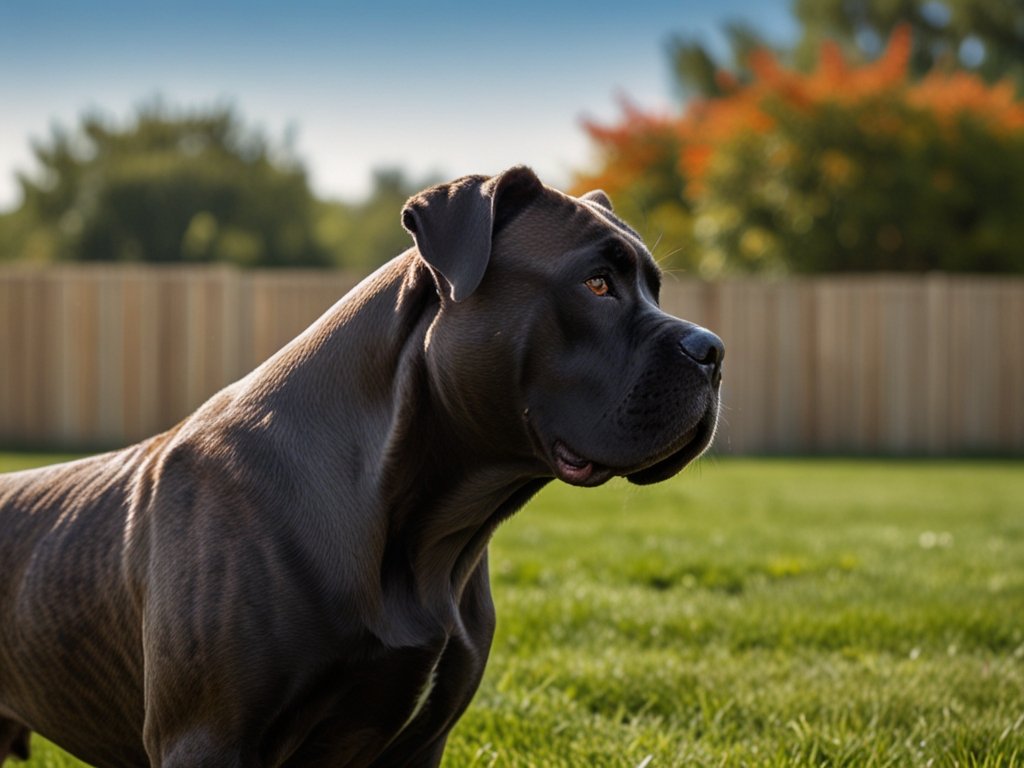
Leave a Reply